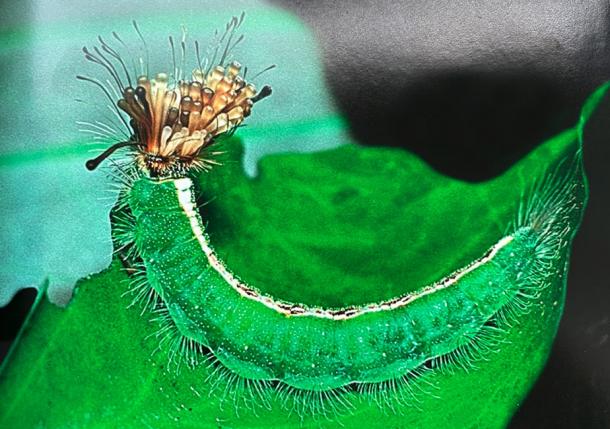
Calydna sturmula
“The house is burning. We don’t need a more sophisticated thermometer, we need a fire hose.” So begins a recent article in The Irish Times, by Paddy Woodworth, which highlights the work of Dan Janzen and Winnie Hallwachs in Área de Conservación Guanacaste (ACG). Woodworth notes that he first started researching ACG in 2011, seeking to understand and learn more about ACG’s “return to most of its enormous pre-agricultural biodiversity, and its intimate linkage to insect life.” It is a sad irony, he says, that a decade-ish later, Dan and Winnie are describing catastrophic population crashes in the populations of spiders and insects in ACG, which they attribute to climate change. And the crash in insect populations has severe effects on overall biodiversity. What might the fire hose be, that could provide hope for the return of insect populations and diversity to the protected area? Woodworth calls Dan and Winnie’s fire hose, or solution, idiosyncratic and daring. A key element is the enlistment of the surrounding communities in protection and restoration activities, as well as a change in mindset. “Part of the problem is in the name,” Dan and Winnie say. “Stop labelling the wild as the wild. There are simply many varieties of gardens. There is no human-footprint-free world.”
Woodworth continues: “...conservationists must stop presenting nature as something separate to be preserved solely in splendid isolation for its own sake. Instead, the human genome itself, Janzen and Hallwachs argue ambitiously, needs to expand its sense of its own extent and needs, from our limited perspective today, to include all of nature. In short, this means we would see rich biodiversity as vital to our own survival; otherwise we will inevitably destroy the natural world.”
It is, concludes Woodworth, a long shot, and the odds against success are huge. Yet, he adds, it is more hopeful than any other national conservation program yet conceived.